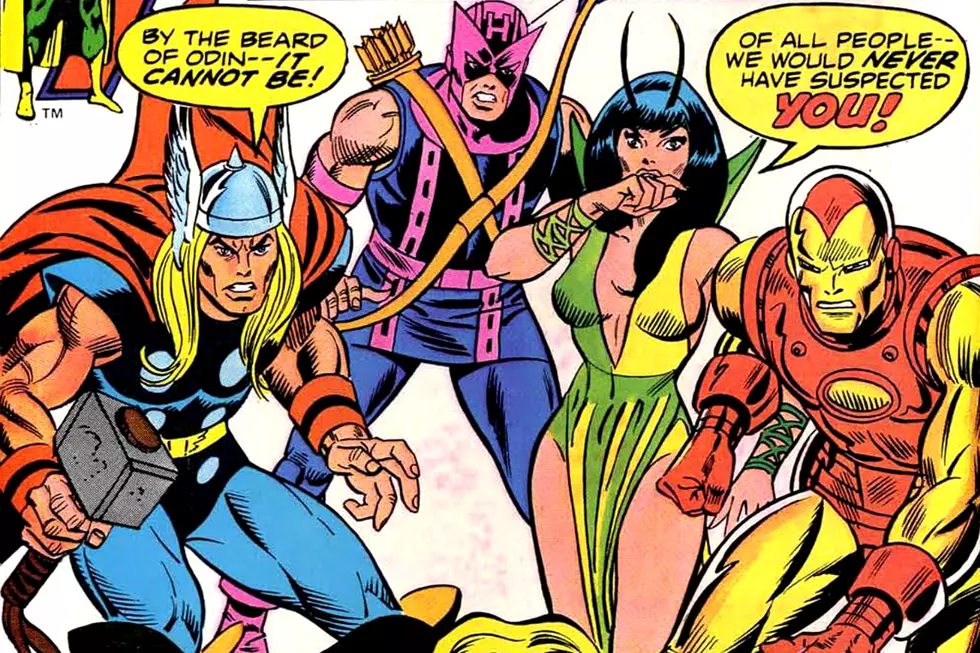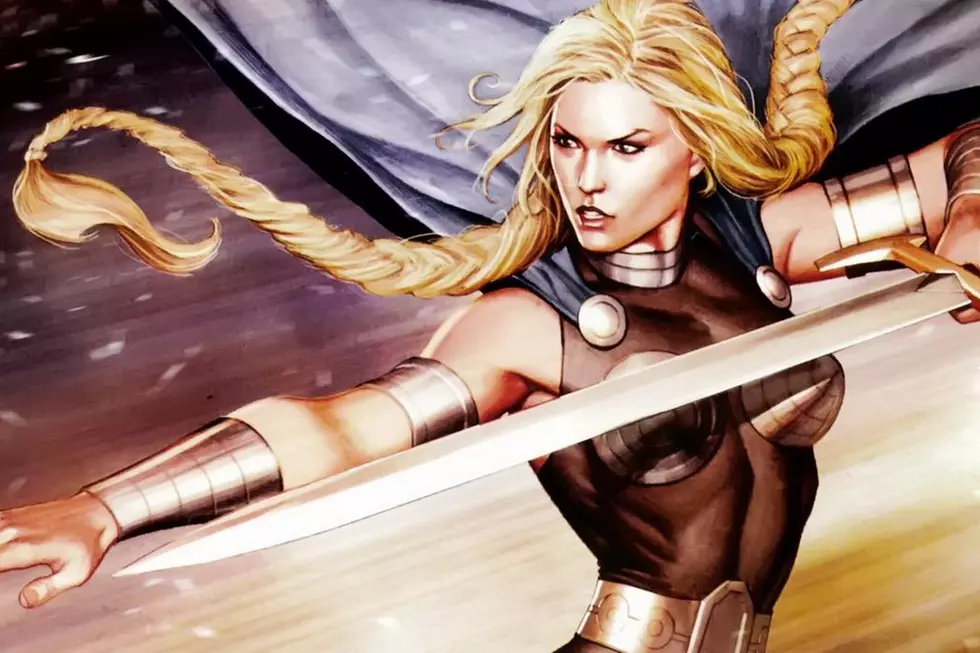
Writer Ron Marz On the Moving Pictures Of ‘Valkyrie’
 Two rival high school girls stand poised to reignite a superpowered World War II grudge match, and comic book fans won't have to turn a single page to watch the fireworks fly.
Two rival high school girls stand poised to reignite a superpowered World War II grudge match, and comic book fans won't have to turn a single page to watch the fireworks fly.
"Valkyrie," a new Nazi-battling motion comic from writer Ron Marz ("Witchblade," "Green Lantern") and Studio 414 is planned to hit audiences in Spring 2010, dipping into two eras for one contrasting narrative.
Viewers of SyFy's Ani-Monday schedule may already recognize Studio 414, which produces the "Street Fighter" and "Voltron" motion comic shorts currently airing each week.
So what's the plan for "Valkyrie?" Marz gives ComicsAlliance a look into the new series' influences, his thoughts on writing heroes and why motion comics were the right medium for a tale nearly seven decades in the making.ComicsAlliance: In the "Valkyrie" press release, you mentioned that you'd been wanting to tell this new story for a while. Can you tell us a little more about the genesis of the story and how it found its way into the world of motion comics?
Ron Marz: Where's any story come from? I never really have an answer to that, or at least not any singular answer. Stories come from everywhere, and this one is no different. Part of it is that I tend to be more drawn to heroes, or really just characters in general, who are ordinary people in extraordinary situations. Extraordinary people doing heroic things aren't as interesting to me. That's really the difference between Kyle Rayner and Hal Jordan. Hal's already a hero, he's a test pilot. I'm more interested in what a regular person does when thrust into a dramatic situation. I'm not saying one is better than another, I'm just saying the "everyman" character is more to my taste as a reader and a writer.
"Valkyrie" is about a 17-year-old girl, Val, who uncovers a long-abandoned suit of battle armor that was once worn by a Nazi saboteur. And she decides she can do some good with it. The flip side of the coin is Roxanne, the queen bee of Val's school, who discovers the hidden lair of a pulp-era hero who opposed the saboteur. So obviously the girls wind up on a collision course. This became a motion comic because I already knew Dave Rodriguez and Joe Whiteaker, who have been producing motion comics as Studio 414 for quite a while now. I first met them when they worked at High Voltage, a video-game company in Chicago, and re-connected with them now that they're at Vicarious Visions, which is an Activision sub that's about 20 minutes from my house. Dave and Joe were looking to expand to original properties, and "Valkyrie" seemed like a good fit.
 CA: The story of "Valkryie" is fairly unique in that it links modern high school girls to what are kind of opposing comic book archetypes from the WWII era. What appealed to you about weaving these two time periods together through seemingly unrelated characters?
CA: The story of "Valkryie" is fairly unique in that it links modern high school girls to what are kind of opposing comic book archetypes from the WWII era. What appealed to you about weaving these two time periods together through seemingly unrelated characters?
RM: The contrast itself is what appealed to me. I realize that juxtaposing time periods is something that crops up in my work pretty regularly. Here the contrast is between the roles of heroes and villains now and 70 years ago, even including the sex of the main characters. One of the things that I wanted to be consistent is that in either time period, "Valkyrie" isn't really over-the-top superhero stuff. It's pretty well grounded, just a step or two away from reality. Nobody has superpowers. If you can accept the Nazis constructed a suit of battle armor in 1939, and somebody dressed up in a costume to stop them, everything else feels pretty real world.
CA: When it comes to motion comics, there are a few schools of thought on the phenomenon. Some think it's a kind of jacked-up middle ground between comics and animation, while others see it as the solution to bringing comics to the digital space in a way that's more accessible to brand new audiences. Where do you personally see the trend headed as it relates to the traditional printed title? What do you think publishers can do to make the most out of translating existing titles into motion comics? (For example, they way you've written "Valkyrie" with motion comics in mind.)
RM: I don't view a motion comic as better than a standard comic; it's just a different delivery system. I think we're doing some things in the storytelling of "Valkyrie" to take advantage of what motion comics do, but ultimately they're both ways of telling stories with pictures. If motion comics act as a lure to an audience that might not look at a regular comic, so much the better. I think one of the real upsides to motion comics is accessibility. People can download them, watch them on TV, watch them on their phones. Translating existing titles to motion comics is obviously how Joe and Dave started this, and it works fairly well, particularly if the storytelling has more of a horizontal rather than vertical format. But the next logical step is what we're doing, creating content with the mindset of motion comics as a primary concern, rather than a secondary one. We want to take maximum advantage of the things that work well in motion comics.
CA: The upcoming release of the Top Cow Bible is a pretty good reminder of your contributions to that universe. Do you have any upcoming comics (motion or otherwise) work there or anywhere else in the pipeline that we should know about?
RM: Top Cow is the lion's share of what's on my plate, but not quite everything. I'm working on both the "Witchblade" and "Magdalena" monthlies, even though "Magdalena" doesn't debut until April 2010. I'm working on the six-issue "Angelus" mini, the first issue of which comes out in December, and we're in the beginning stages of getting next year's big event series, "Artifacts," which starts in the summer and will continue for 13 issues. And there's at least one other Top Cow project that's still under wraps. Beyond that, "Pantheon City," which is a creator-owned project by me and Clement Sauve, is still coming from Dark Horse. And I have a few other creator-owned irons in the fire. I'll be debuting a preview book for an Asian-themed vampire project called "Shinku" at the Baltimore Comic Con this weekend.
More From ComicsAlliance









